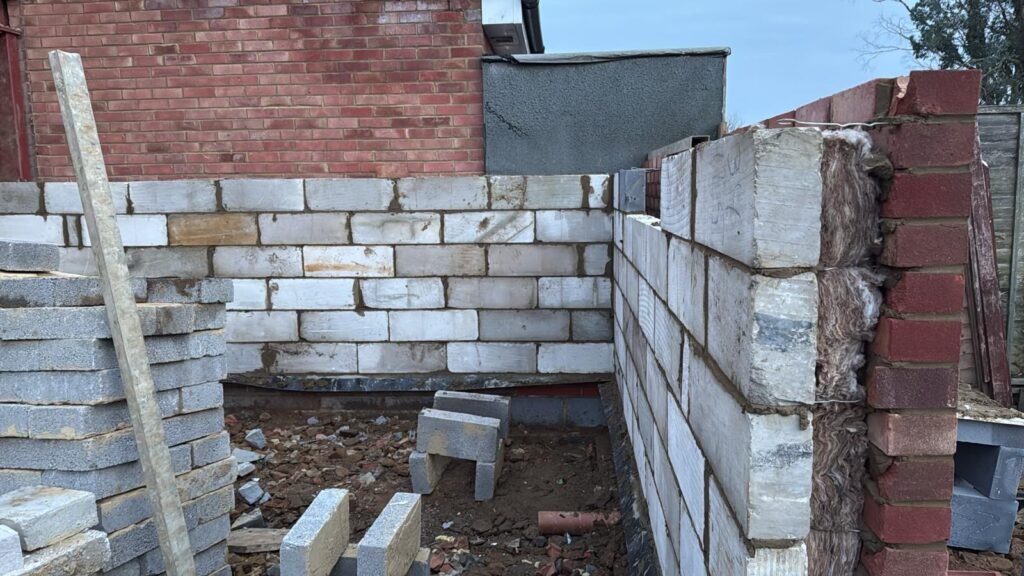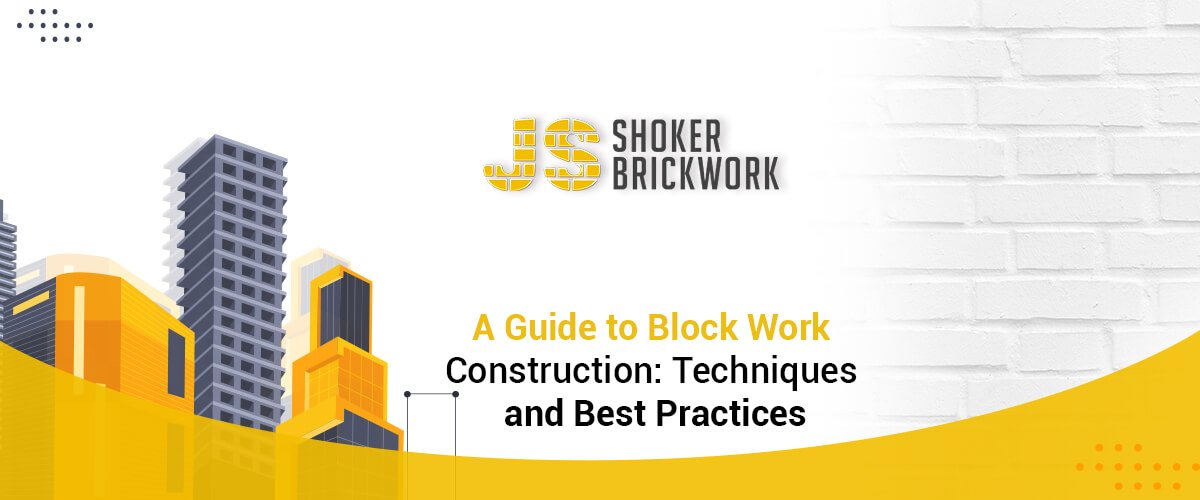Block Work Construction: A Comprehensive Guide
Block work construction is a fundamental building technique used in both residential and commercial projects across London. Known for its durability, versatility, and cost-effectiveness, block work is essential for constructing walls, foundations, and other structural elements. This comprehensive guide explores the techniques and best practices for block work construction, ensuring your project is built to the highest standards. Blockwork services in London are crucial for achieving exceptional results, as these professionals bring expertise and experience to every aspect of block work. By partnering with skilled blockwork services, you can ensure that your construction project benefits from top-quality craftsmanship and adherence to best practices.

What is Block Work Construction?
Block work construction involves using concrete blocks, also known as cinder blocks or masonry blocks, to create walls and other structural elements. These blocks come in various sizes and compositions, offering flexibility in design and construction. Block work is prized for its strength, fire resistance, and thermal properties, making it a popular choice for builders and architects.
Benefits of Block Work Construction
- Durability and Strength
- Concrete blocks are known for their exceptional strength and durability. They can withstand significant weight and pressure, making them ideal for load-bearing walls and foundations. The robust nature of block work ensures the longevity and stability of structures built with this technique.
- Cost-Effectiveness
- Block work construction is generally more cost-effective than other building methods. Concrete blocks are relatively inexpensive to produce and purchase, and their uniform size and shape simplify the construction process, reducing labor costs. Additionally, block work requires less maintenance over time, contributing to long-term savings.
- Fire Resistance
- Concrete blocks are inherently fire-resistant, providing excellent protection against fire hazards. This fire resistance is a critical safety feature, especially in residential buildings, where the risk of fire can have severe consequences. Using block work in construction enhances the overall safety and resilience of the building.
- Thermal and Acoustic Insulation
- Concrete blocks offer good thermal mass, helping to regulate indoor temperatures by absorbing and releasing heat. This property improves energy efficiency, reducing heating and cooling costs. Additionally, block work provides effective acoustic insulation, minimising noise transmission between rooms and from external sources.

Block Work Construction Techniques
- Foundation Preparation
- Before starting block work construction, a solid foundation is essential. The foundation must be level, well-compacted, and designed to bear the weight of the block walls. Proper drainage should also be ensured to prevent water accumulation, which can undermine the foundation’s stability.
- Laying the First Course
- The first course of blocks is crucial in ensuring the accuracy and stability of the entire structure. It must be perfectly level and aligned. Builders use a string line, spirit level, and measuring tape to achieve precision. Any discrepancies in the first course can lead to structural issues as the wall rises.
- Staggered Joints
- To enhance the strength and stability of concrete block work walls, the blocks are laid in a staggered pattern, also known as a running bond. This technique involves offsetting each row of blocks so that the vertical joints do not align. Staggered joints distribute the load more evenly and prevent cracks from propagating through the wall.
- Mortar Application
- Mortar is used to bond the blocks together. The mortar mix typically consists of cement, sand, and water. The correct consistency of mortar is crucial for a strong bond. Mortar is applied using a trowel, and care is taken to ensure even application and the correct thickness of joints, usually around 10mm.
- Reinforcement
- Reinforcement enhances the structural integrity of block work walls, particularly in load-bearing and retaining walls. Steel reinforcement bars (rebar) can be placed vertically and horizontally within the block cavities. These bars are then filled with concrete to create a reinforced concrete core, providing additional strength and stability.
- Cutting and Fitting
- Occasionally, blocks need to be cut to fit around openings such as doors and windows or to finish a row. A masonry saw or chisel and hammer can be used for cutting blocks. Precision is essential to ensure that the cut blocks fit snugly and maintain the wall’s structural integrity.
- Curing and Drying
- After the blocks and mortar are in place, adequate curing and drying time is necessary. Curing allows the mortar to harden and gain strength. The process typically takes about 28 days, during which the mortar should be kept moist to prevent cracking and ensure proper bonding.

Best Practices for Block Work Construction
- Quality Materials
- Using high-quality blocks and mortar is essential for the success of a block work project. Ensure that the blocks are uniform in size, shape, and composition and free from defects. The mortar mix should be prepared correctly to achieve the right consistency and bonding properties.
- Skilled Labor
- Block work construction requires skilled labor to ensure precision and quality. Experienced masons understand the nuances of laying blocks, mixing mortar, and ensuring level and plumb walls. Investing in skilled labor can prevent costly mistakes and structural issues.
- Proper Planning
- Detailed planning and design are crucial for efficient block work construction. Architectural and structural drawings should be meticulously followed, and all dimensions and specifications must be adhered to. Proper planning minimizes material wastage and ensures the project stays on schedule.
- Safety Measures
- Safety should always be a priority on construction sites. Workers should use personal protective equipment (PPE) such as gloves, safety glasses, and helmets. Additionally, proper scaffolding and ladders should be used to prevent falls and injuries when working at heights.
- Regular Inspections
- Regular inspections are essential to ensure the quality and integrity of block work construction. Inspections should be conducted at various stages of the project, from foundation preparation to the final curing of mortar. Any issues or deviations from the plan should be addressed promptly to maintain structural integrity.
- Environmental Considerations
- Block work construction should consider environmental impacts. Using locally sourced materials reduces transportation emissions, and incorporating recycled materials, such as reclaimed concrete, can enhance sustainability. Proper waste management practices should be followed to minimize construction waste.
Read More – A Guide to Block Work Construction: Techniques and Best Practices
Conclusion
Block work construction stands out as a reliable and cost-effective method for building durable and resilient structures. By adhering to the techniques and best practices outlined above, you can ensure that your block work project meets the highest standards. Whether you’re constructing a residential home or a commercial property, block work offers numerous advantages, including strength, fire resistance, thermal insulation, and cost savings.
For further information or inquiries, feel free to contact us:
- Website: JS Shoker Brickwork
- Phone: +44-7403201624
- Email: info@jsshokerbrickwork.co.uk



